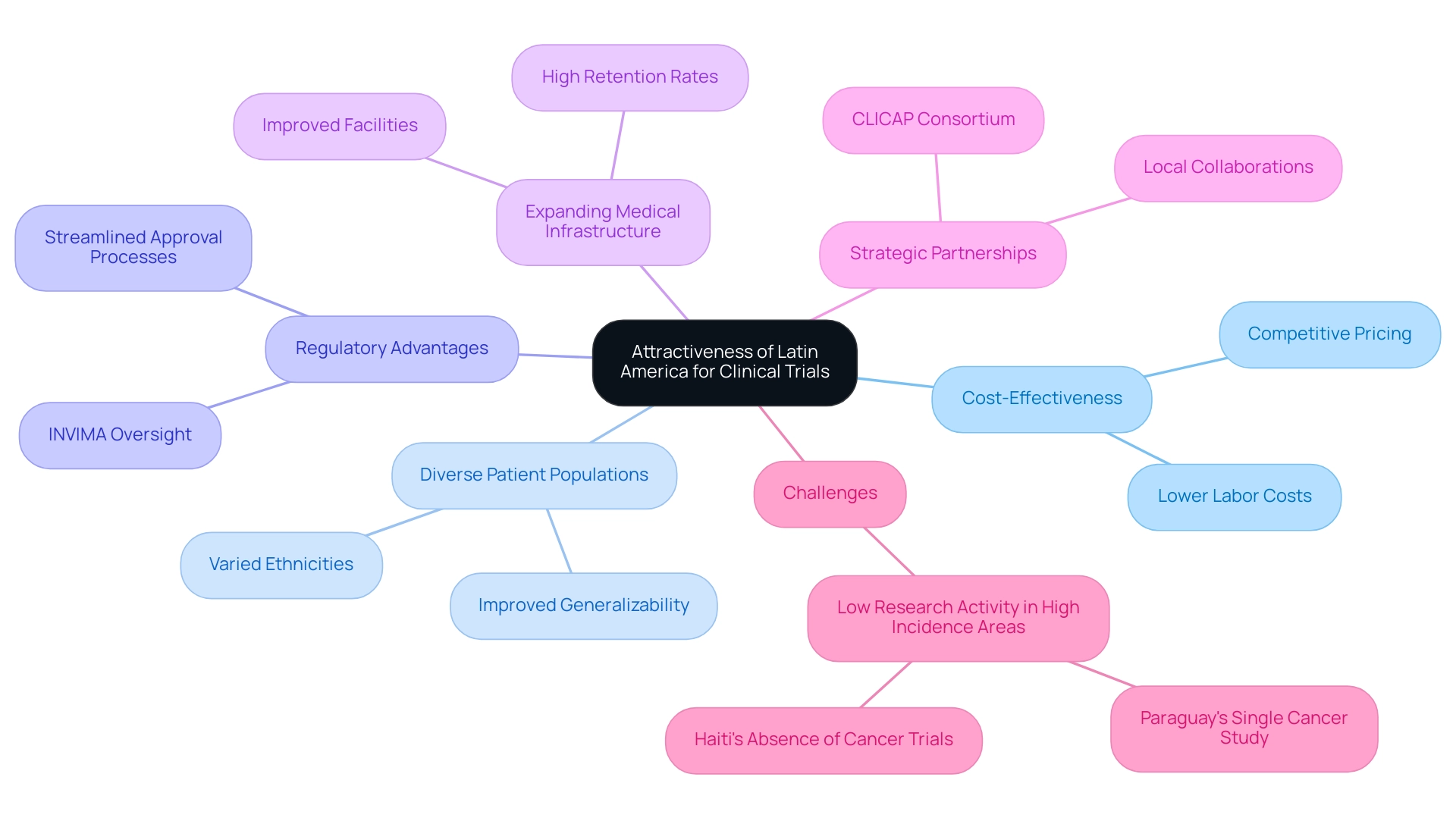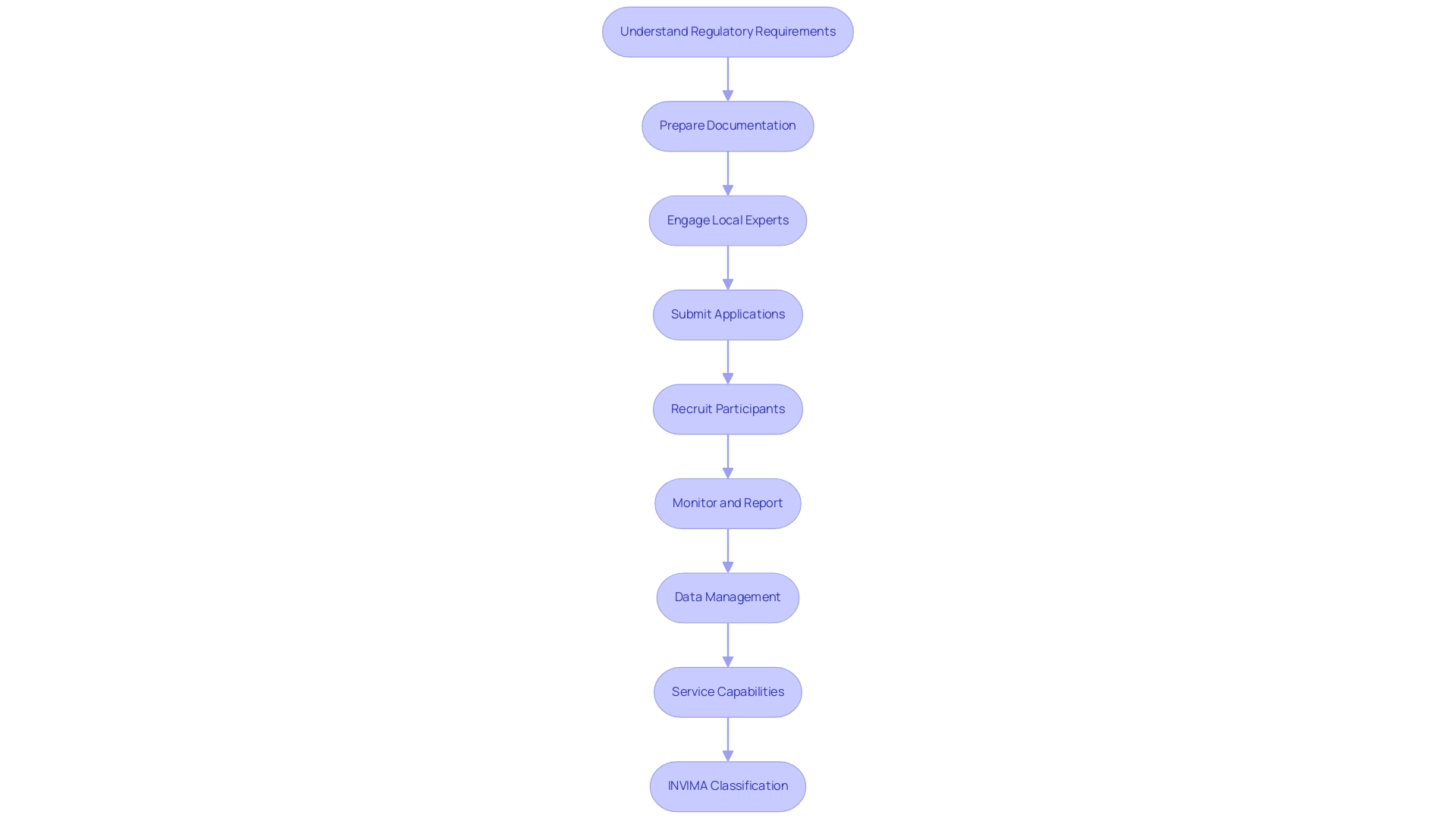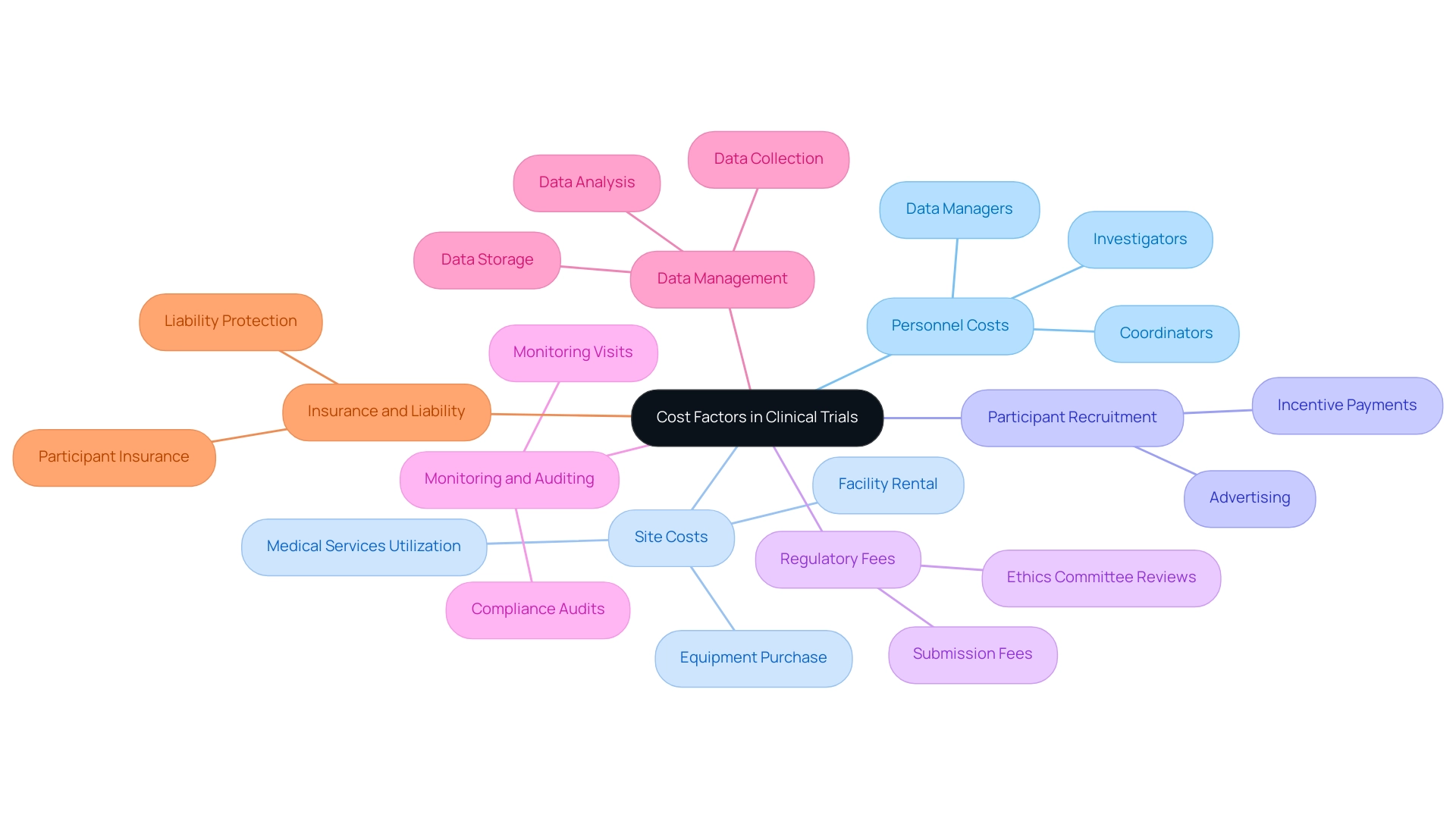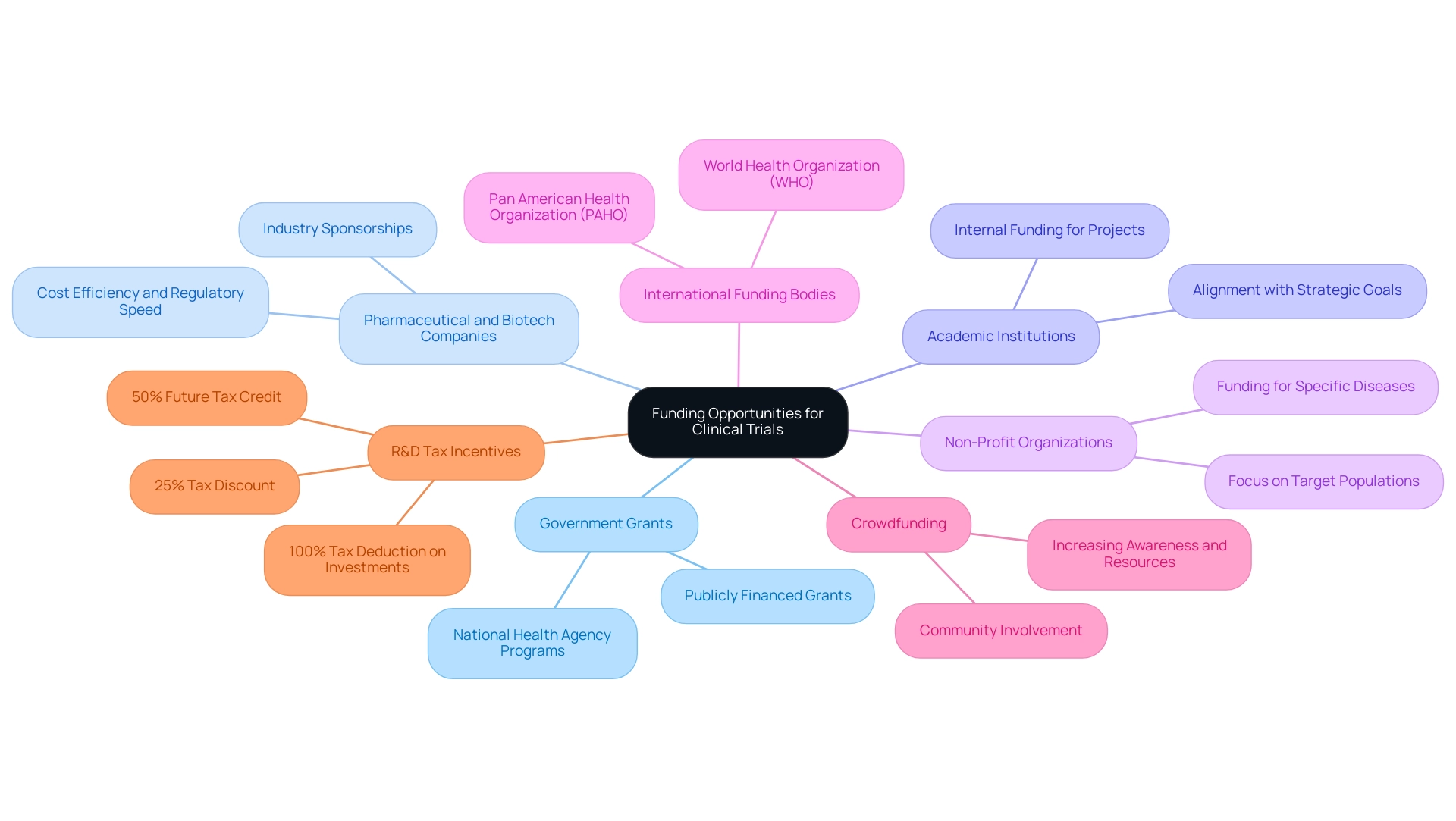


Latin America has emerged as a prominent hub for clinical trials, drawing attention from researchers and pharmaceutical companies alike. This region offers a unique combination of cost-effectiveness, diverse patient populations, and regulatory advantages that make it an attractive destination for conducting high-quality clinical research. As the demand for innovative treatments grows, understanding the intricacies of navigating the clinical trials process in Latin America becomes essential.
From engaging with local experts to comprehending the financial landscape and identifying funding opportunities, stakeholders must be well-informed to capitalize on the benefits this region has to offer. The following exploration delves into the factors that contribute to Latin America's appeal for clinical trials while addressing the challenges that still need to be overcome.
Latin America has increasingly become a prime location for conducting clinical studies, driven by several compelling factors:
Cost-Effectiveness: Clinical studies in Latin America can be conducted at a fraction of the cost compared to North America and Europe. Lower labor costs and competitive pricing for services contribute significantly to operational savings.
Diverse Patient Populations: The region's rich diversity in ethnicities and genetic backgrounds is invaluable for studies that require a varied participant pool. This diversity improves the generalizability and applicability of research findings.
Regulatory Advantages: Streamlined regulatory processes in numerous Latin American nations enable quicker approval times for research studies. For example, Colombia's Minister of Health backs efforts such as the partnership between bioaccess™ and Caribbean Health Group to establish Barranquilla as a premier location for research studies. Additionally, the regulatory framework provided by INVIMA, the National Food and Drug Surveillance Institute, ensures that health products meet rigorous safety and efficacy standards. INVIMA oversees the marketing and manufacturing of health products, identifies violations of health standards, and provides medical approval for imports and exports. It is classified as a Level 4 health authority by PAHO/WHO, indicating its competence in health regulation.
Expanding Medical Infrastructure: Swift progress in medical facilities and investigative capabilities throughout Latin America has made it possible to carry out high-quality trials. The region’s improving healthcare facilities and research institutions enhance the overall quality and dependability of studies. 'GlobalCare Clinical Trials' collaboration with bioaccess™ illustrates this expansion, showing a decrease in research participant recruitment time by more than 50% and an impressive retention rate exceeding 95%. Bioaccess™ provides extensive clinical trial management services, including feasibility assessments, site selection, compliance reviews, trial setup, import permits, project management, and reporting, which improve the efficiency of clinical trials.
Strategic Partnerships: Collaborating with local researchers and institutions can lead to successful partnerships, ensuring adherence to local regulations and enhancing study execution. The Latin American Consortium for the Investigation of Lung Cancer (CLICAP), established in 2011, illustrates such collaborative efforts aimed at enhancing lung cancer studies in the region.
Despite the potential, challenges remain. For example, nations such as Uruguay, Cuba, and Paraguay report high cancer occurrence and death rates yet perform relatively few research studies. Paraguay, for instance, has just one cancer study, highlighting the necessity for enhanced investigative efforts. Likewise, Haiti's absence of cancer research studies, as shown by its lack of investigation activity in this area, implies significant obstacles that require attention.
Overall, the combination of cost-effectiveness, varied patient demographics, regulatory benefits, expanding medical infrastructure, and strategic alliances makes Latin America an increasingly appealing location for research studies, providing both economic and scientific advantages. The impact of medical studies extends to local economies, creating jobs, promoting economic growth, improving healthcare, and enhancing international collaboration.

Navigating the clinical research process in Latin America involves several key steps:

Multiple expense elements can influence medical studies in Latin America:
Grasping these cost elements is essential for researchers, as they also emphasize the extensive management services provided by bioaccess®, including feasibility studies, site selection, compliance reviews, setup, import permits, project management, and reporting.
Furthermore, these experiments contribute significantly to local economies by creating jobs—over 1,000 jobs in recent studies—promoting economic growth with an estimated increase of 5% in local healthcare spending, improving healthcare access, and fostering international collaboration. By comprehensively understanding these factors, researchers can better plan their budgets and seek appropriate funding sources.

Researchers can investigate various funding options for medical studies in Latin America, especially in Colombia, which is notable for its competitive benefits:
By exploring these funding opportunities and understanding the comprehensive trial management services—including feasibility assessments, site selection, compliance reviews, and project management—researchers can enhance their chances of securing the necessary resources to conduct their trials while benefiting from Colombia's robust healthcare system and favorable economic conditions. Additionally, the impact of Medtech clinical studies on local economies is profound, creating jobs, promoting economic growth, and improving healthcare access, which can lead to better health outcomes for the population.

Latin America is positioned as a leading destination for clinical trials, driven by a combination of cost-effectiveness, diverse patient populations, and regulatory advantages. The region's lower operational costs, coupled with its rich ethnic diversity, enhance the generalizability of clinical trial results, making it an appealing choice for researchers. Furthermore, streamlined regulatory processes, exemplified by the efficiency of INVIMA in Colombia, facilitate quicker approvals, while the growing medical infrastructure supports high-quality research.
Despite these advantages, challenges persist, particularly in certain countries where clinical trial activity does not align with disease burden. Addressing these gaps is crucial for maximizing the potential of clinical research in the region. The strategic partnerships between local institutions and global organizations play a vital role in navigating these complexities, ensuring compliance and optimizing study execution.
Moreover, understanding the financial landscape and identifying funding opportunities are essential steps for stakeholders in the clinical trials process. By leveraging government grants, industry collaborations, and academic resources, researchers can secure the necessary funding to conduct impactful studies. Ultimately, the continuous investment in clinical trials not only enhances medical knowledge but also contributes to local economies, fostering job creation and improved healthcare access.
As the landscape evolves, the promise of Latin America as a hub for clinical trials remains strong, offering significant benefits for global health advancements.
Why is Latin America becoming a popular location for clinical studies?
Latin America is increasingly favored for clinical studies due to cost-effectiveness, diverse patient populations, regulatory advantages, expanding medical infrastructure, and strategic partnerships.
What are the cost benefits of conducting clinical studies in Latin America?
Clinical studies in Latin America are significantly cheaper than in North America and Europe due to lower labor costs and competitive pricing for services.
How does the diversity of patient populations in Latin America benefit clinical research?
The rich diversity in ethnicities and genetic backgrounds in Latin America enhances the generalizability and applicability of research findings, making it invaluable for studies requiring a varied participant pool.
What regulatory advantages does Latin America offer for clinical studies?
Many Latin American countries have streamlined regulatory processes that allow for quicker approval times for research studies, supported by regulatory bodies like INVIMA in Colombia, which ensures compliance with health standards.
How has the medical infrastructure in Latin America improved for clinical trials?
The region has seen rapid advancements in medical facilities and investigative capabilities, enhancing the quality and reliability of clinical trials.
What role do strategic partnerships play in conducting clinical studies in Latin America?
Collaborating with local researchers and institutions helps ensure adherence to local regulations and improves study execution, as demonstrated by initiatives like the Latin American Consortium for the Investigation of Lung Cancer (CLICAP).
What challenges exist for clinical studies in certain Latin American countries?
Some countries, such as Uruguay, Cuba, and Paraguay, face high cancer rates but conduct relatively few research studies, indicating a need for increased investigative efforts.
What are the key steps in navigating the clinical research process in Latin America?
Key steps include understanding regulatory requirements, preparing documentation, engaging local experts, submitting applications, recruiting participants, monitoring and reporting, data management, and utilizing service capabilities.
What cost elements should researchers consider when planning studies in Latin America?
Researchers should consider personnel costs, site costs, participant recruitment expenses, regulatory fees, monitoring and auditing costs, data management expenses, and insurance and liability considerations.
What funding options are available for medical studies in Latin America, particularly in Colombia?
Funding options include government grants, support from pharmaceutical and biotech companies, academic institution funding, non-profit organizations, international funding bodies, crowdfunding, and R&D tax incentives.